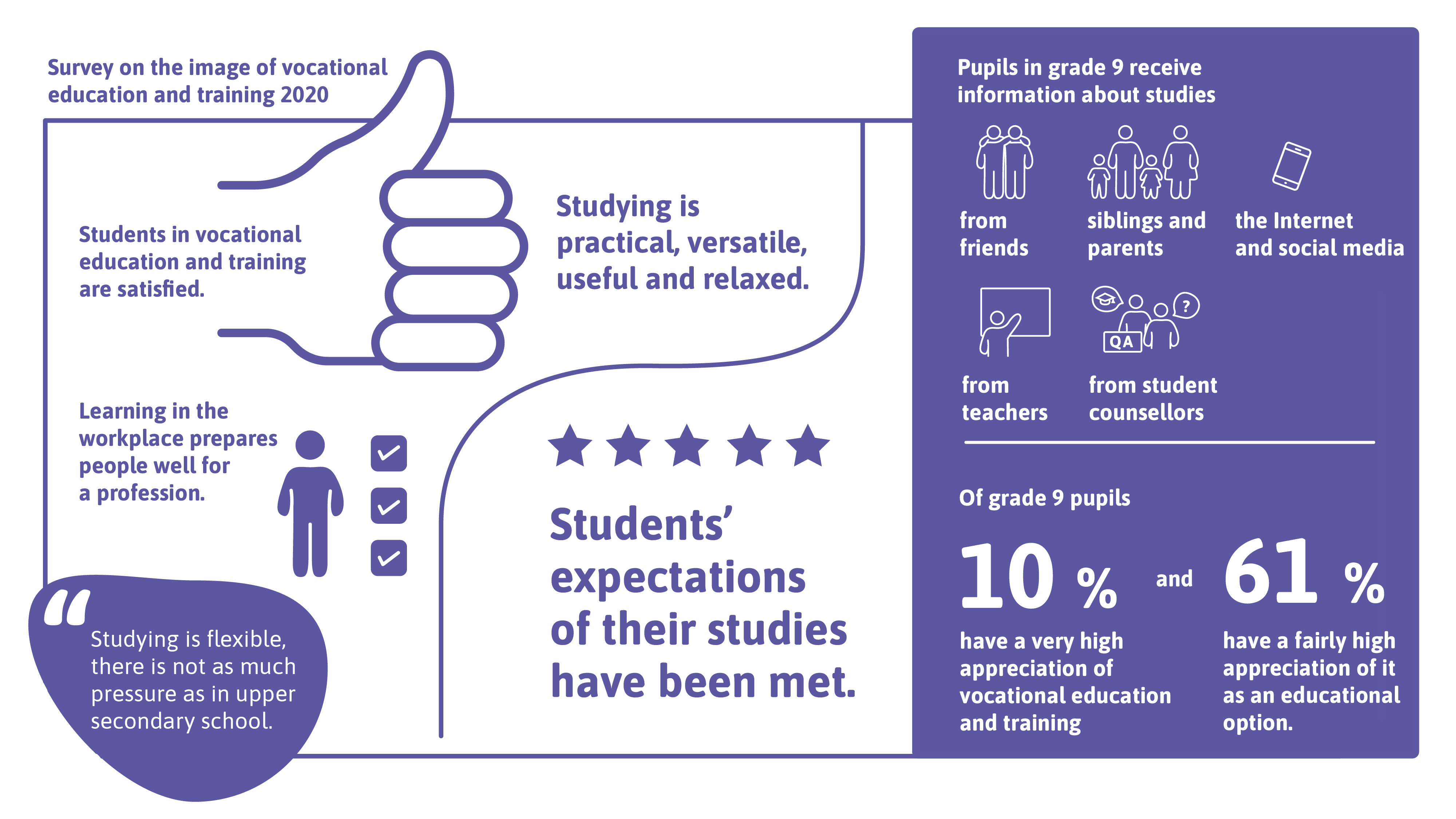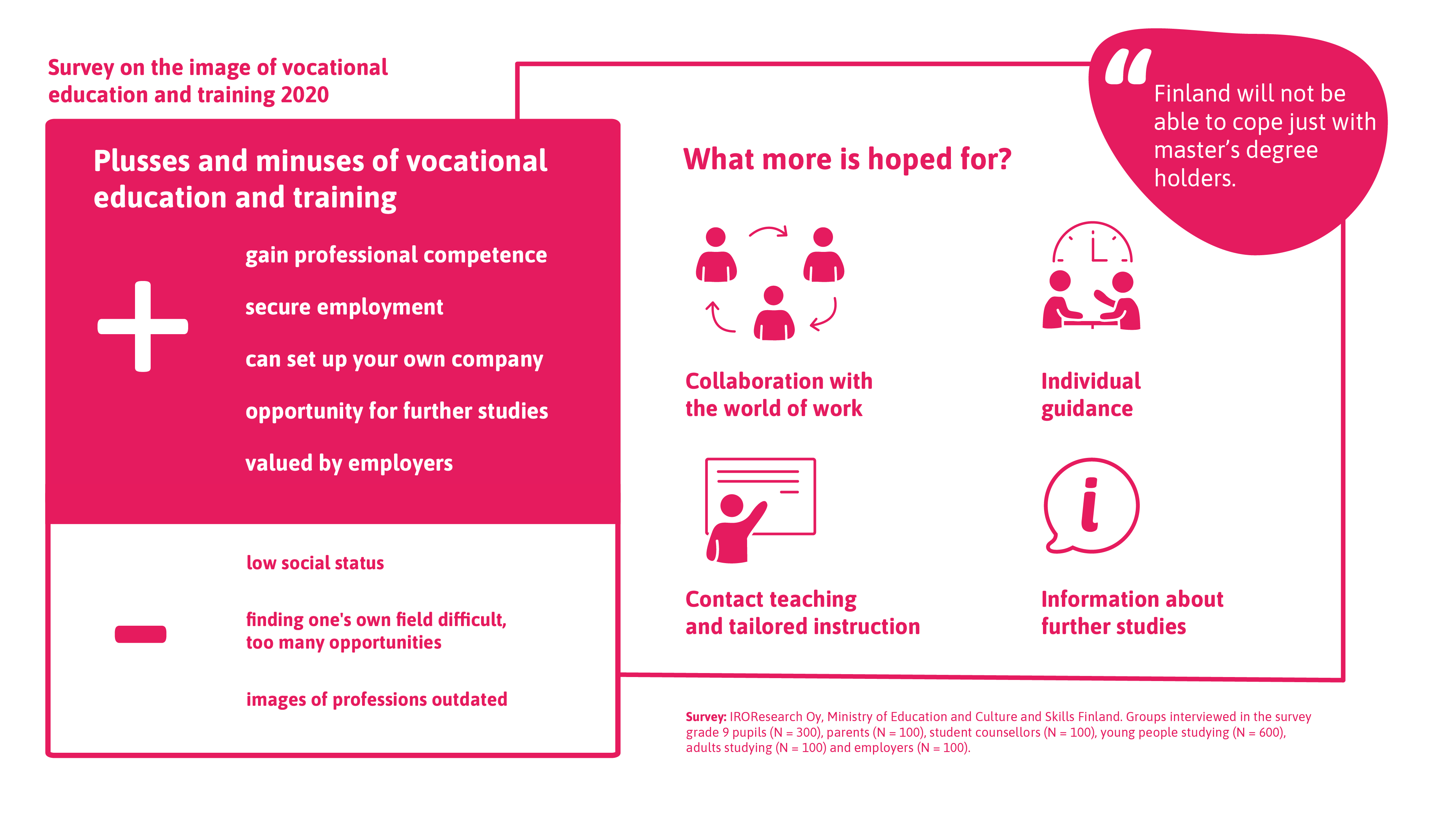Survey on the image of vocational education and training
Vocational education and training students are satisfied with their studies. The survey on the image of vocational education and training commissioned by the Ministry of Education and Culture and Skills Finland every two years shows that studies are considered practical, versatile, useful, flexible and relaxed. Vocational education and training is considered particularly suitable for those who have found their own field and profession and for whom studies involving concrete work are preferred.

The most positive images of vocational education and training are among young people studying in vocational education and training. Studying that includes a lot of on-the-job learning is considered to be good preparation for a profession, and students’ expectations of their studies were met on the whole.
The future of vocational education and training is seen as bright
The future of vocational education and training is seen as bright overall by all target groups. People with skills in practical work will continue to be needed, and Finland will not be able to cope just with a workforce composed of graduates from institutions of higher education. Collaboration between students, teachers and employers was seen as needing improvement.
The adequacy of resources for vocational education and training and the quality of education are of some concern in all target groups.
Attitudes of upper secondary school pupils should be influenced by providing information
Of all the target groups that participated in the study, pupils from grade 9 considered vocational education and training to be less appreciated than upper secondary school education. 61% of them had a fairly high appreciation of vocational education and training as an educational option, but only 10% consider vocational education and training to be highly valued. The parents of grade 9 pupils also value upper secondary school more, but the difference between the level of appreciation for vocational education and training is clearly smaller than that of their children (young people in grade 9).
Employers appreciate vocational education and training, and this will be needed in Finland in the future. In their opinion, there are worrying differences in the competence levels of vocational education and training graduates, and some graduates also have major shortcomings in basic skills. Some employers feel that they have too much responsibility and work to train students / recent graduates to the level that the work actually requires.

The survey covers several target groups
The aim of the survey on the image of vocational education and training was to examine the image of vocational education and training, and the perceptions, opinions and experiences of vocational education and training among various target groups. The survey was carried out by IROResearch Oy from September to December 2020. They were commissioned by the Ministry of Education and Culture and Skills Finland. The survey follows on from those carried out in 2007, 2010, 2013, 2016 and 2018.
The survey included both qualitative and quantitative approaches. The sample sizes of the target groups for the quantitative part were: Pupils in grade 9 of comprehensive school (N = 300) and their parents (N = 100), student counsellors in comprehensive school (N = 100), young people studying in the second year of vocational education and upper secondary school (N = 600), adults studying in vocational education (N = 100) and decision-makers in human resources issues in companies with more than five employees (N = 100). The quantitative part of the data was collected through telephone interviews. For the qualitative survey 52 people were interviewed personally. The interviews were conducted in the Helsinki, Tampere, Kuopio and Rovaniemi regions.
More information
Communications manager Katja Katajamäki, katja.katajamaki@skillsfinland.fi.